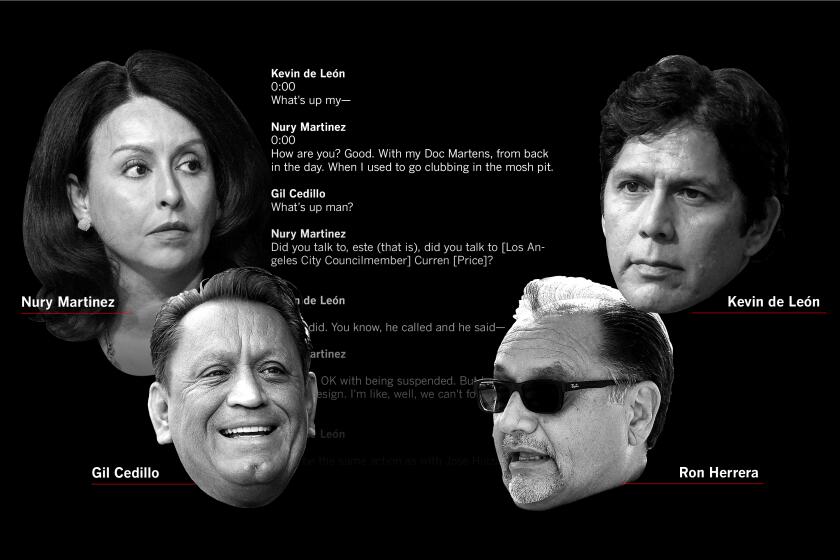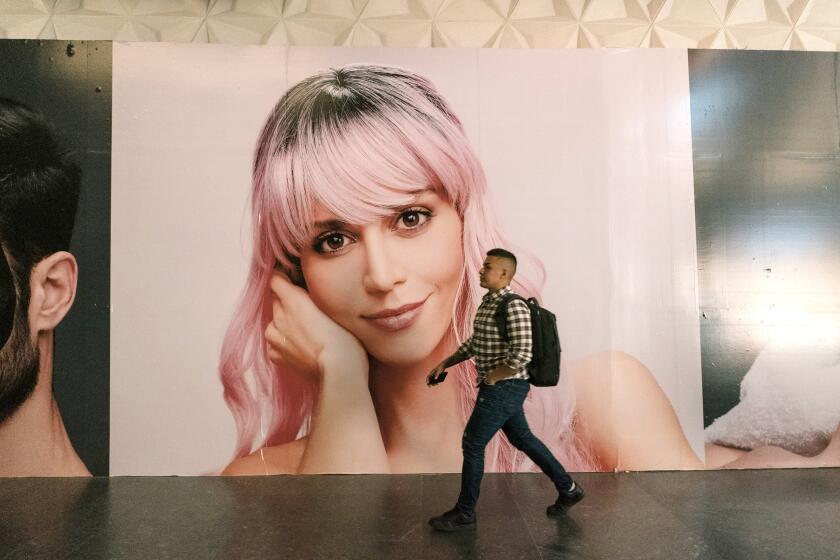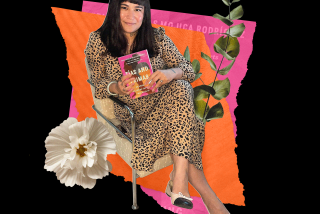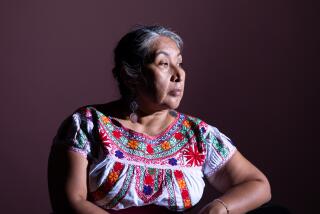I’m Mexican American. But the L.A. City Council audio leak reminded me that I’m Oaxacan too
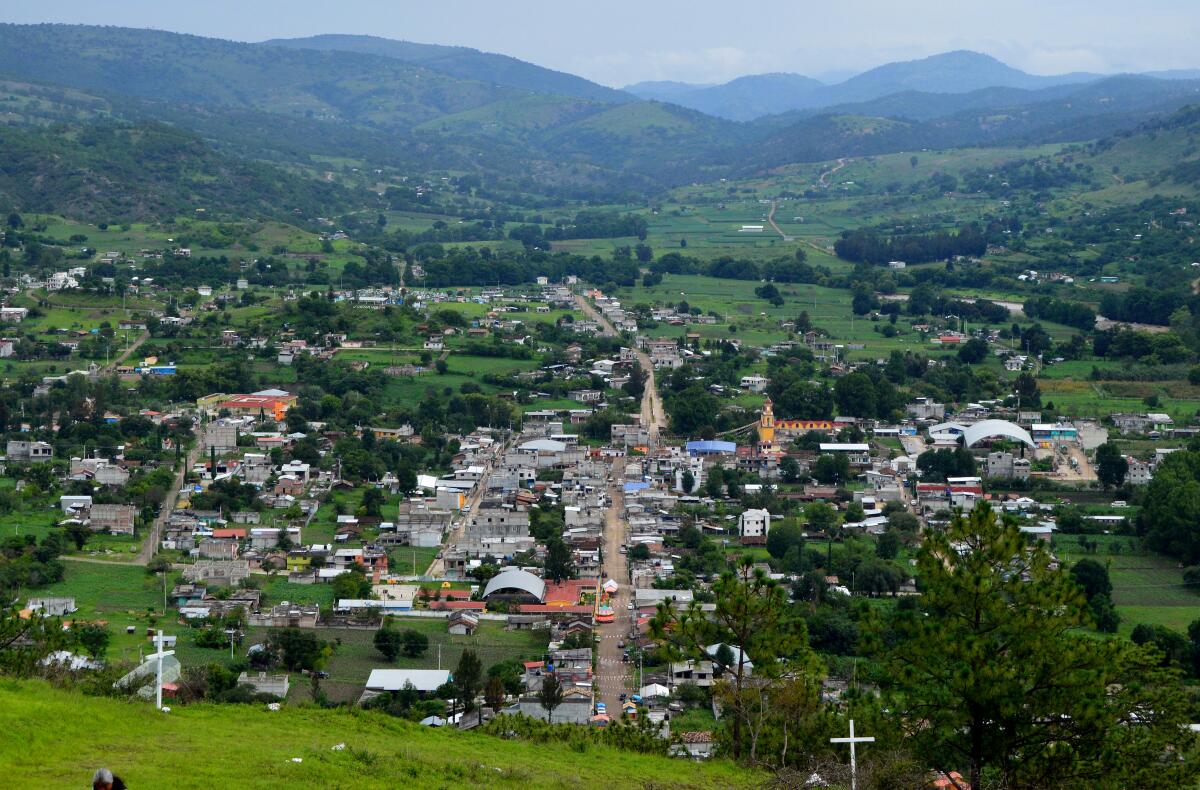
As a Mexican American, I love being from two worlds. I feel lucky to have been born in Florida, growing up in a beachside city in all the state’s humid glory. I feel proud knowing how to make tamales and enchiladas and rooting for two soccer teams during the World Cup.
But recently, I’ve been wondering whether there’s more to who I am.
My mother was born in Ñuu Snuviko, also known as San Juan Mixtepec, a small pueblo in the mountains of Oaxaca, Mexico. It translates to the “place where the clouds descend” in Mixteco, my mother’s native language. Surrounded by small farms in a narrow valley, the town of about 7,000 people clings to a gravel road running from the base of the highlands to the plaza, El Centro. On Fridays, El Centro comes alive with a market.
For a long time, I did not consider Mixtepec as part of me. When people have asked about my heritage, I have said I am Mexican American.
And then came the audio leak that still reverberates in Los Angeles: Members of the City Council had made racist remarks in speaking about several minority groups, including Oaxacans living in Koreatown. Nury Martinez, then-City Council president, mocked Oaxacans as ugly, short and dark. She said she didn’t know “what village” they came from, as if they were too primitive for the city.
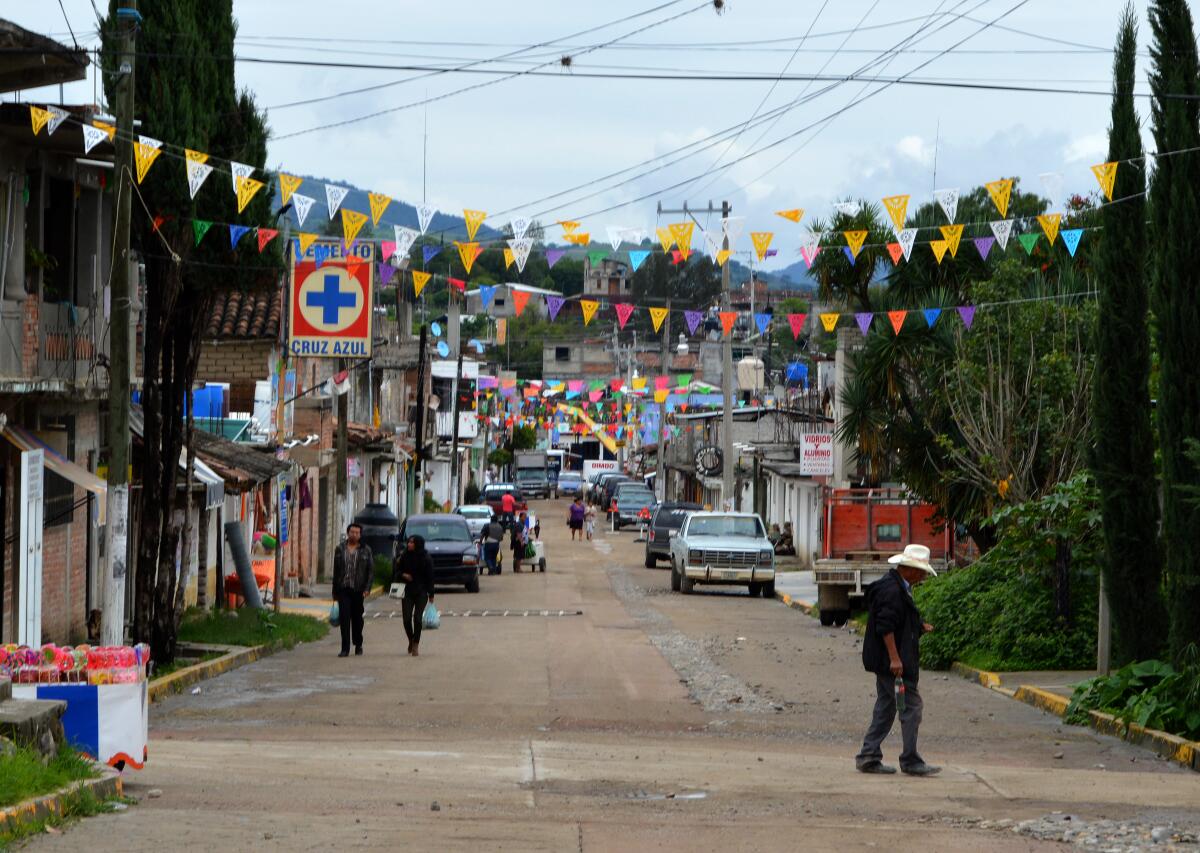
The state of Oaxaca is one of the country’s poorest, largely untouched by tourism seen along Mexico’s coasts and capital. But Oaxaca is rich in culture and history, home to savory mole, smoky mezcal and ancient ruins that tell of a time before the Europeans came. Two-thirds of the state is mountainous, creating a mosaic of remote villages like my mother’s. Ten main Indigenous languages are spoken in Oaxaca, and if you listen carefully, you can hear them in the streets of L.A.
A bombshell recording has thrown L.A. politics into chaos. What was really being discussed? L.A. Times reporters and columnists pick it apart, line by line.
I remember sitting at home when I read Martinez’s comments in a story my colleagues broke on a Sunday. The list of people she and three others insulted was long. But Oaxacans?
I felt lightheaded as if I’d stood up too quickly as I processed their words. “Tan feos,” she said. So ugly. A prominent Mexican American had invoked stereotypes about a group that, for so long, has been among the most marginalized in Mexico, a country that has long refused to acknowledge systemic colorism and racism.
As shown in a transcript, then-Councilmember Gil Cedillo followed Martinez’s comments by saying, “I’m glad they’re wearing shoes.” Former Los Angeles County Federation of Labor President Ron Herrera casually mentioned his mother used to call Oaxacans “Indios,” or Indians, a word often used not as an identifier but spat as an insult.
Councilmember Kevin de León didn’t join the insults, but he also didn’t object, his silence a tacit endorsement. Martinez and Cedillo are no longer on the council, but De León still refuses to resign.
Didn’t they realize Oaxacans had shaped and touched culture and food in all corners of Los Angeles? Didn’t they know Oaxacans make up a share of farmworkers in the U.S.? Didn’t they understand that even when they have little, Oaxacans will always have tortillas con frijoles y mole to offer? Maybe. But the damage was done.
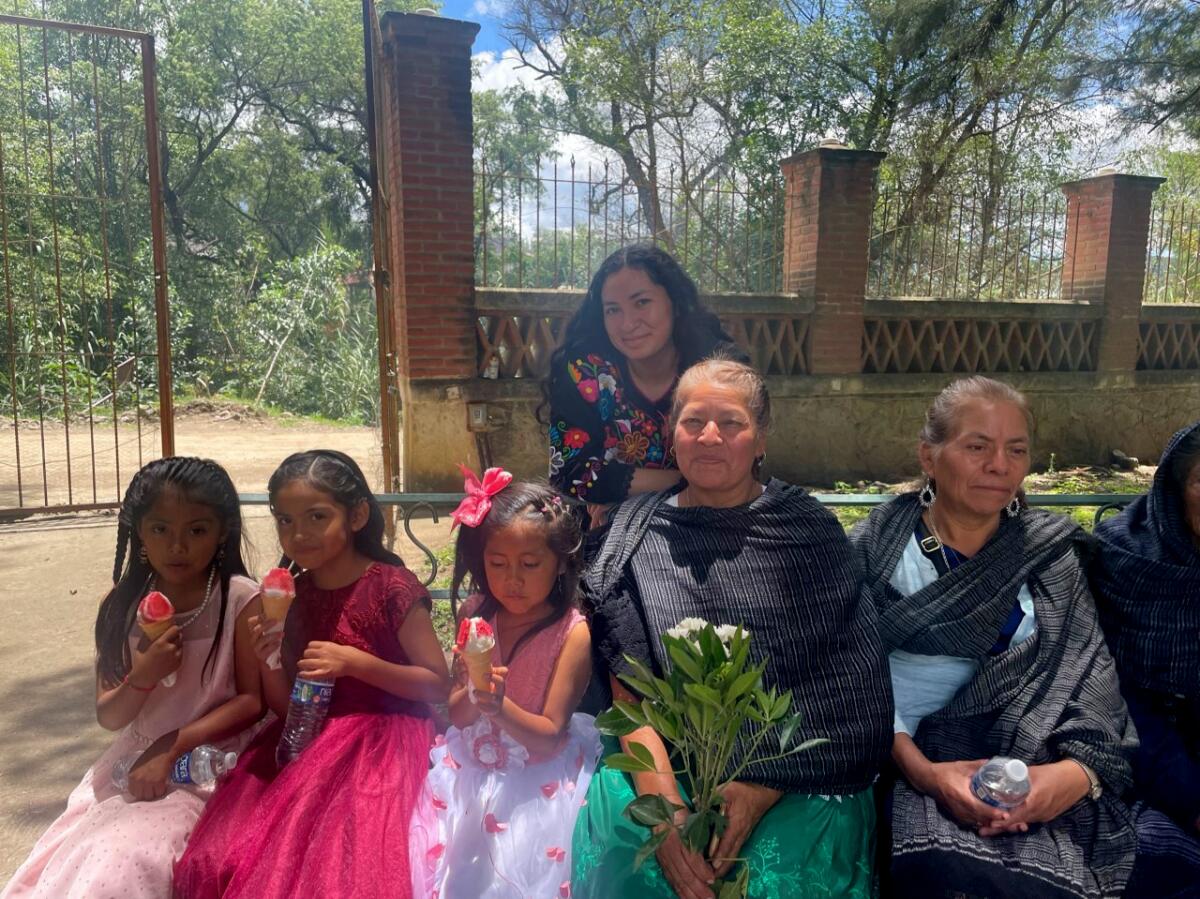

I spoke to Indigenous Oaxacans who were hurt and disappointed, yet not surprised by what the audio revealed. But they also expressed immense pride for our culture and our people, who have fought for years for visibility. I told them my mother was from Oaxaca, and that I understood how they felt.
I also spoke to Mireya Olivera, the editor of Impulso, a Oaxacan media site based in L.A, in the aftermath of the scandal. I told her my mother was from Oaxaca. She was surprised to learn about my family’s roots and said she wanted to one day hear the story of how a Oaxacan ended up at The Times.
“I was born in Florida, though,” I told her reflexively. It was a degree of separation from my roots that I believed existed.
“You are still Oaxacan,” she replied.
::
In Mexico, some believe that they and their countrymen are all one race, mestizos with Spanish and Indigenous roots. But I subconsciously understood that this is not how they saw Indigenous Mexicans, how they saw my mother. The lighter the skin, the higher the social standing in Mexico, where ads typically feature blond or brunette models.
In telenovelas we are not the glamorous mothers and statuesque daughters featured in dramatic story arcs, but maids and laborers and criminals — short, dark-skinned and often meek. Seen, but not heard.
My colleague Kate Linthicum wrote about the mestizo myth in Mexico and the push by activists to study colorism and racism more closely. A 2017 study by researchers at Vanderbilt University found that the whiter you are in Mexico, the more likely you are to receive a complete education. The darker you are, the more likely you are to make less money than your white counterpart.
In Mexico, a growing movement is challenging discrimination against darker-skinned people. Lighter-skinned Mexicans still dominate film, politics and business.
Living in Los Angeles, I felt as if this did not touch me. But the audio reminded me that centuries of colorism and classism in Latin America have insidiously seeped into American culture, meshing seamlessly with the U.S. versions.
When I told other Latinos where my mother, Eva, is from, they would say, “You don’t look Oaxacan,” as if it were a compliment. And for a while, I took it as one. I am fair-skinned, lighter than my two sisters. My hair is curly and thick, not like the straight raven black of most Oaxacans.
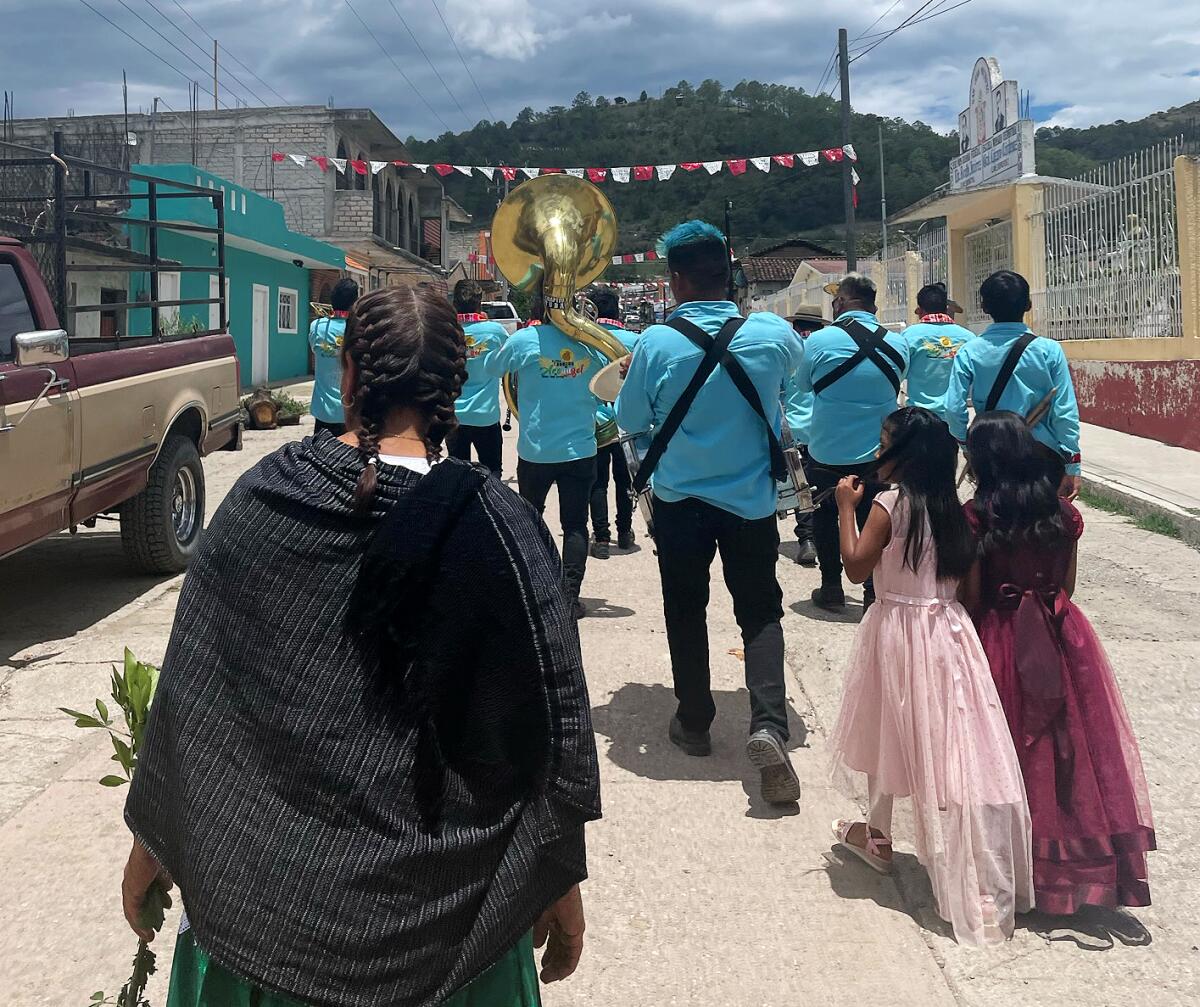
Still, as a child, I understood how my mother’s Mixtec background influenced our lives. It’s probably why I’m short, standing at a mere 5 feet. It meant that Mom did not learn Spanish until she came to the U.S., and that her grasp of the language was imperfect. It meant that my face would flush hot when we were shopping and my mother answered phone calls in Mixteco and people would stare.
I have many regrets about not being trilingual like some of my cousins born in Mexico. I’ve asked my mother, why didn’t you teach me your native tongue? “You refused to speak anything but English,” she would tell me. Indeed, I would wait for my older sisters to translate her Spanish orders into English. I’m grateful that in adolescence, I began to understand the importance of Spanish and stuck to it.
When my mother learned English for her U.S. citizenship test, we practiced writing out numbers in English together, filling lined pages with rows and rows, into the hundreds. I craved assimilation, for both of us, because it meant we wouldn’t be different from everybody else.
For a long time, I only tolerated my mother’s hometown. We spent summers in Mixtepec, and I always dreaded the 13 hours it took to get there. I piled books and my Nintendo into my suitcase. It still feels foreign to attend an annual festival that involves men on horseback violently ripping off the heads of roosters that are hung and decorated like piñatas.
But now I feel lucky to have spent time in my mom’s pueblo, disconnected from social media and playing life-size Monopoly and manhunt in the darkness that cloaks the town after sunset. The air is clear and still, with a quietness that I miss.
A bombshell recording has thrown L.A. politics into chaos. What was really being discussed? L.A. Times reporters and columnists pick it apart, line by line.
My grandmother, who died in 2012 of cancer, only spoke Mixteco. We never held a single conversation. But I remember her smile. She once asked me for a pair of scissors with a motion of her hand.
Today, Mixtepec has changed. Those who traveled north for economic opportunity, like my tías and tíos, have come back to build homes. They’ve clung to Mixteco, but some say the younger generation is losing the language. There are internet cafes connecting Mixtepec to the world in a way that didn’t feel possible before. The buckets we used to take showers have been replaced by running water.
But we still wash dishes outside in a concrete basin. An ofrenda for my grandparents goes up every October for Día de Muertos, with heaps of pan dulce and pollo con mole as offerings. My mother loves to reminisce about scrubbing her clothes in the icy cold waters of Río Mixteco before jumping in to cool off. She smiles when she recalls her glory days running track and field in school before she dropped out in sixth grade to work.
I was in awe — as were many in Oaxaca — when Yalitza Aparicio, the star of the Oscar-winning movie “Roma,” brought Oaxacans to mainstream U.S. media. I remember excitedly watching it with my mother as Yalitza brought a Mixteco dialect, different from my mother’s, to Hollywood. My chest swelled with pride knowing she was from Tlaxiaco, a small town I’ve visited to see my aunts and uncles. Even as I simmered with anger, she held her head high as Mexican personalities mocked her skin color, her nose, her Indigeneity. She responded by continuing to succeed.
::
Our identities don’t define us. They can feel uncomfortable and painful, like breaking in a new pair of boots. But sometimes, they can be like a pair of old jeans sitting in the back of the closet that hold all kinds of memories.
In a small way, I’m grateful Martinez was caught insulting Oaxacans. Leaders have used it as an opportunity to highlight the poor treatment Oaxacans face in a city as progressive as Los Angeles. Oaxacans are artists, law students, nurses, engineers. We’re journalists, too.
I spent a week this past summer in Mixtepec, helping my mom prepare for a three-day festival, a celebration of saints. She had been named mayordoma, a responsibility so great that more than a year ago, she packed up her one-bedroom apartment and quit her two full-time jobs in Naples to live there full time.
At first it was hard for me to see the festival as anything but frivolous, days of dancing, people wearing masked costumes and drinking from dawn to midnight. “The party never ends there,” my mother, 54, said. But it’s also a homecoming for those like my mother, who might not have left if she had the chance to create a prosperous life in Mixtepec.
My aunts were in town, gossiping in Mixteco about who wasn’t volunteering enough to help with the food and listing backup plans in case the rain came. The smell of tortillas and mole filled the air.
My mother looked lighter. She was no longer weighed down by laborious housekeeping or hotel food-prep duties. Instead, she darted around in colorful skirts that changed every day, her hair in braids, a rebozo around her shoulders.
She was home. And for once, I didn’t want to leave.
More to Read
Sign up for Essential California
The most important California stories and recommendations in your inbox every morning.
You may occasionally receive promotional content from the Los Angeles Times.
